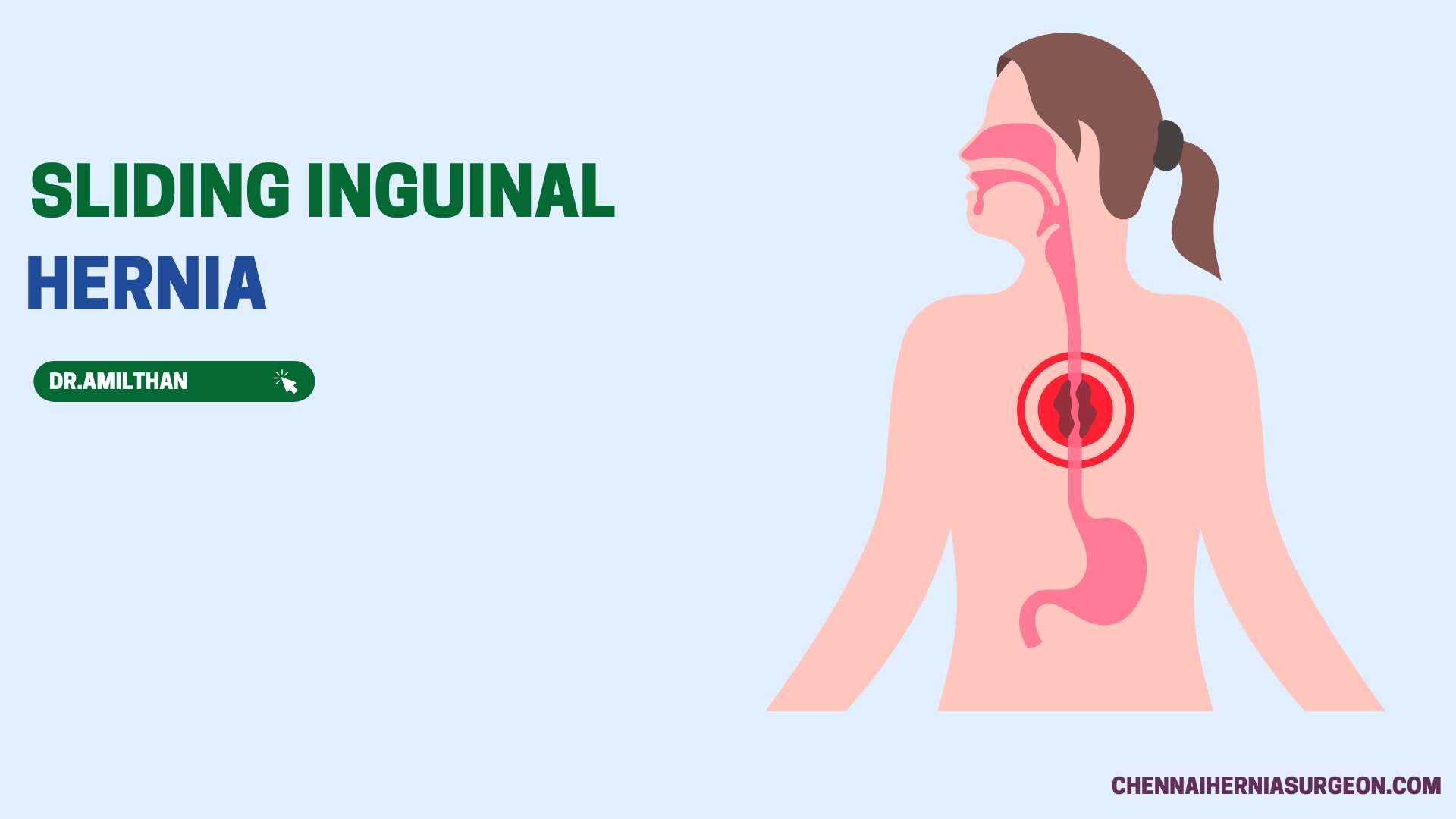A hernia occurs when an organ or tissue structure pushes through a weak muscle wall surrounding it. Hernias are usually not very serious and can be treated through medication or minor surgical procedures.
There are several types of hernias based on their location in the body. Sliding inguinal hernias are one such type of hernias that occur in your abdomen. In this article, we’ll look in detail at what sliding inguinal hernias are, their causes, and some other types of hernias.
What is Sliding Inguinal Hernia?
A sliding inguinal hernia is a protrusion of a retroperitoneal organ through an abdominal wall defect. As the name suggests, it happens when a retroperitoneal organ pushes through or “slides” down the weak abdominal wall and enters the inguinal canal. It can be either a direct or indirect hernia.
A Brief History of Sliding Inguinal Hernia
In the beginning, sliding inguinal hernias were considered to be a complicated surgical condition. This is because the hernia sac contains the retroperitoneal organ that has pushed through the abdominal wall. The organ can be damaged if the doctors are not careful during the surgical procedure.
Later, Robert Bendavid classified sliding inguinal hernias into three different anatomical variants. This classification is based on the size of the hernia sac and its relation to the retroperitoneal organ engulfed in it.
Type 1:
In this hernia, a part of the peritoneal sac is made up by the wall of a viscus.
Type 2:
In this type, the hernia contains a retroperitoneal viscus and its mesentery, where the mesentery forms part of the wall of the peritoneal sac.
Type 3:
Here, the sliding hernia consists of a protrusion of a viscus itself, and the peritoneal sac is very small or even absent.
What are the Causes of Sliding Inguinal Hernia?
As discussed earlier, a sliding inguinal hernia is caused when a retroperitoneal organ pushes through the weak abdominal wall and enters the inguinal canal. The primary organs that have a high chance of sliding through the abdominal wall are the bladder, ovaries, the large intestine, etc.
Some major causes of sliding inguinal hernia are
- Weak lower abdominal wall (this makes it easier for the organs to push through the muscles),
- Multiple pregnancies (this can also weaken your abdominal wall),
- Chronic coughing (the pressure in your body while coughing can push the organs through the weak muscles), and
- Obesity.
Location of Sliding Inguinal Hernia
It is most commonly found in infant girls, where over 20% of these girls have sliding hernia containing the fallopian tube or ovaries. In adults, it is most prominent in men, with only minimal cases in women.
The hernia sac is pushed through the abdominal wall and enters the inguinal canal. Thus, the hernia is located behind or outside the peritoneal sac.
Treatment for Inguinal Hernia
With proper guidance and Some lifestyle changes can be effective in Non-surgical methods. but in the surgical method, you must know which surgery is best for inguinal hernia
What are Other Types of Hernias?
There are many types of hernias that are classified based on their location in the human body. This classification makes it easier to identify the hernia and determine the best course of treatment to cure it. Below are some of the most common types of hernias.
Epigastric hernia
An epigastric hernia occurs when a part of the intestine pushes through the abdominal muscles present between the chest and navel (belly button).
Femoral hernia
A femoral hernia occurs when an organ pushes through a weak muscle in the abdominal wall. The hernia appears in the upper part of the thigh near the groin area.
Spigelian hernia
A Spigelian hernia occurs when there is a defect in the Spigelian fascia. It is a rare type of ventral hernia and can be serious if not treated early.
Lumbar hernia
A lumbar hernia occurs when the intraperitoneal or extraperitoneal structures push through a weakness in the posterolateral abdominal wall. This hernia is more common in men and often happens on the left side of the abdomen.
Traumatic hernia
A Traumatic Abdominal Wall Hernia (TAWH) occurs when the abdominal wall comes into contact with a low or high-velocity object. The object is usually blunt and doesn’t pierce the skin. This impact disrupts the abdominal muscle structure and causes hernia.
Umbilical hernia
As the name suggests, the umbilical hernia occurs in the umbilicus (belly button). A loop of the intestine pushes through the umbilical ring, a small opening in the abdominal muscles.
Incisional hernia
Incisional hernia is more common in people who have had past incisional surgeries (ex.Infraumbilical Incision) in their abdomen. An organ or tissue structure pushes through the weak muscles around the incision site.
There are other types of Hernias as well (ex. Narath’s Hernia , Sibson hernia , MAYDL’S HERNIA )
If you feel like you have a Hernia it is always advised to consult a Leading Hernia Specialist in your area
Conclusion
Hernias is a common disease, starting from Physiological Umbilical Hernia , sublay-mesh-repair-umbilical-hernia , interstitial hernia to Phantom Hernia that can cause discomfort and pain if left untreated for a long time
So If you feel like you have a hernia, don’t take time, Find out which Doctor to consult for Hernia and start your treatment immediately.
FAQs
With the exception of the women in their 40s, for whom incisional hernias predominate, inguinal hernias are the most common hernia type in females. The probability of emergency presentation is highest in elderly females, particularly those with femoral hernias.
Most patients feel well enough to resume daily activities, such as driving and returning to work within a few days. However, it is best to limit activities to two weeks to allow for sufficient recovery. Patients should not exercise or undertake any heavy lifting for the first two weeks following hernia surgery.





